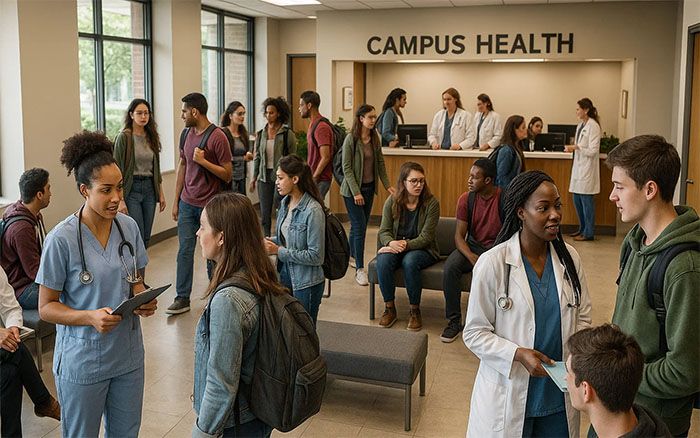Making Teletherapy Sustainable for Your Campus

As the world becomes increasingly digital, teletherapy has become a popular way for students to access mental health services. Teletherapy is a form of therapy that is conducted over video, phone, or text messages. It allows students to receive the help they need without having to physically visit a therapist’s office.
Teletherapy has become even more important since the COVID-19 pandemic. Furthermore, this is likely due to students having been isolated from their support systems and possibly experiencing increased stress and anxiety.
Here are some ways to make teletherapy sustainable for your campus:
Invest in Relevant Technology
Investing in reliable and user-friendly technology is essential to keeping teletherapy sustainable on your campus. The right tools not only ensure smooth, uninterrupted sessions for students and staff but also make the entire process more efficient.
For example, some key technology investments might include:
- Purchasing HIPAA-compliant video conferencing software
- Providing students with smartphones or tablets for teletherapy sessions
- Ensuring that your campus Wi-Fi can thoroughly support online counseling sessions
Ultimately, these technology upgrades help create a seamless teletherapy experience. As a result, students can access the support they need without facing technical challenges, making the program more effective and accessible for all.
The Importance of Teletherapy Training for Staff
Teletherapy involves unique skills and techniques that differ from in-person therapy, so it’s crucial to properly train your counseling staff on how to conduct effective virtual sessions. Well-trained staff can provide a higher level of care, ensuring students feel supported even from a distance.
Key areas to focus on during training include:
- How to build rapport with students over video or phone
- How to deal with technical issues in the moment
- How to ensure that students feel comfortable and safe during their sessions
Equipping staff with these skills ensures they can confidently navigate the challenges of teletherapy, creating a smoother experience for all. This training is vital for maintaining a high standard of care in a virtual setting.
Create Clear Policies and Guidelines
To keep a teletherapy program running smoothly and effectively, it’s essential to set clear policies for both students and staff. These guidelines help manage expectations and ensure everyone is on the same page.
Some important areas to cover might include:
- Guidelines for how students can schedule teletherapy sessions
- What to do if a session is interrupted due to technical issues
- How to ensure the privacy and confidentiality of teletherapy sessions
Having these policies in place can help maintain a consistent and reliable approach to offering care. Clear communication goes a long way in building trust and ensuring the program’s long-term success.
Communicate (Even Overcommunicate) With Students
Knowing what resources are available and how to access them is key for students. When it comes to communication, more is better—overcommunicating can help ensure students don’t miss out on important information.
Some ways to keep students aware of the teletherapy services offered include:
- Sending regular emails or newsletters to students
- Creating a webpage or portal where students can access teletherapy resources
- Hosting virtual meetings to discuss the benefits of teletherapy
Constant communication helps students feel connected and aware of the support and resources available to them. The more accessible and visible the information, the more likely students are to use the services when they need them.
Evaluate Effectiveness
To keep your teletherapy program sustainable and successful, it’s essential to regularly evaluate how well it’s working. This means taking the time to see what’s going well and where improvements can be made.
Some ways to assess the program’s effectiveness include:
- Gathering feedback from students and staff about their experiences with teletherapy
- Tracking the number of students who access teletherapy services
- Monitoring student outcomes
Regular evaluations help ensure the program stays on track and continues to meet students’ needs. By listening to feedback and analyzing data, you can make informed adjustments that keep the service valuable and accessible for everyone.
Address Equity Issues
For teletherapy to be truly sustainable on your campus, it’s essential to address equity concerns around access and availability. Not all students face the same challenges, so it’s important to create solutions that help everyone get the support they need. This could include:
- Providing teletherapy services to students who live in remote or underserved areas
- Ensuring that students with disabilities have access to teletherapy services
- Providing resources for students who may not have access to technology or internet connectivity
Addressing these equity issues ensures that all students, regardless of their circumstances, have the opportunity to benefit from teletherapy. When everyone has fair access to care, the program becomes stronger and more inclusive for the entire campus community.
Key Takeaways
Teletherapy is a crucial tool for providing mental health services to students, especially during stressful and uncertain times. To make teletherapy sustainable on your campus, consider investing in technology and training staff.
Additionally, create clear policies and maintain open communication with students. Regularly evaluate the program’s effectiveness and address any equity concerns. These steps will help ensure that all students have access to the support they need to thrive.
















